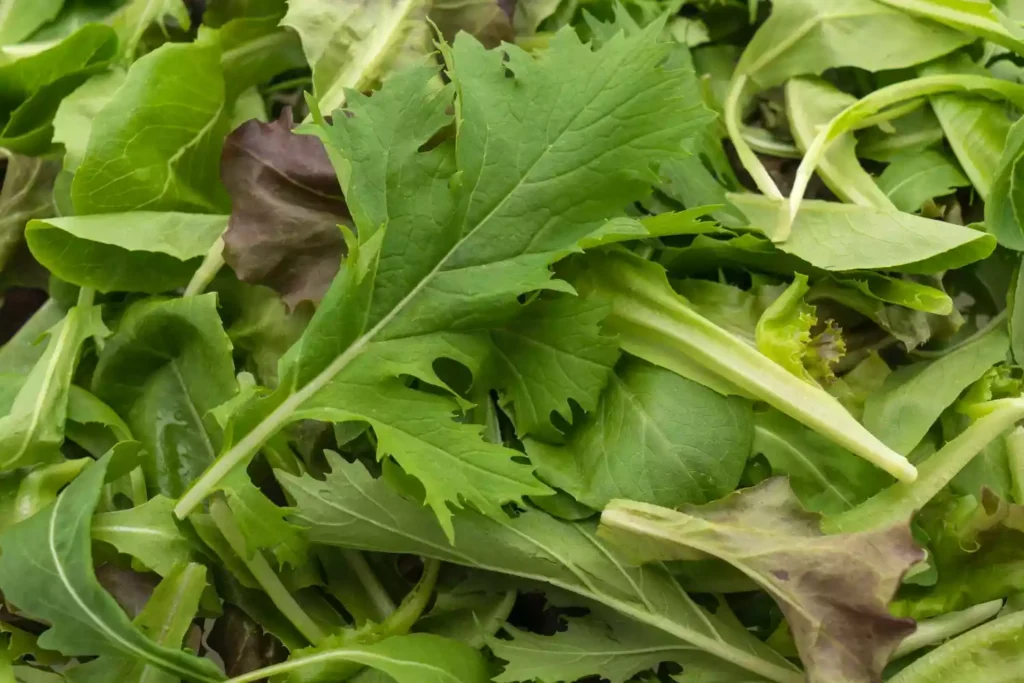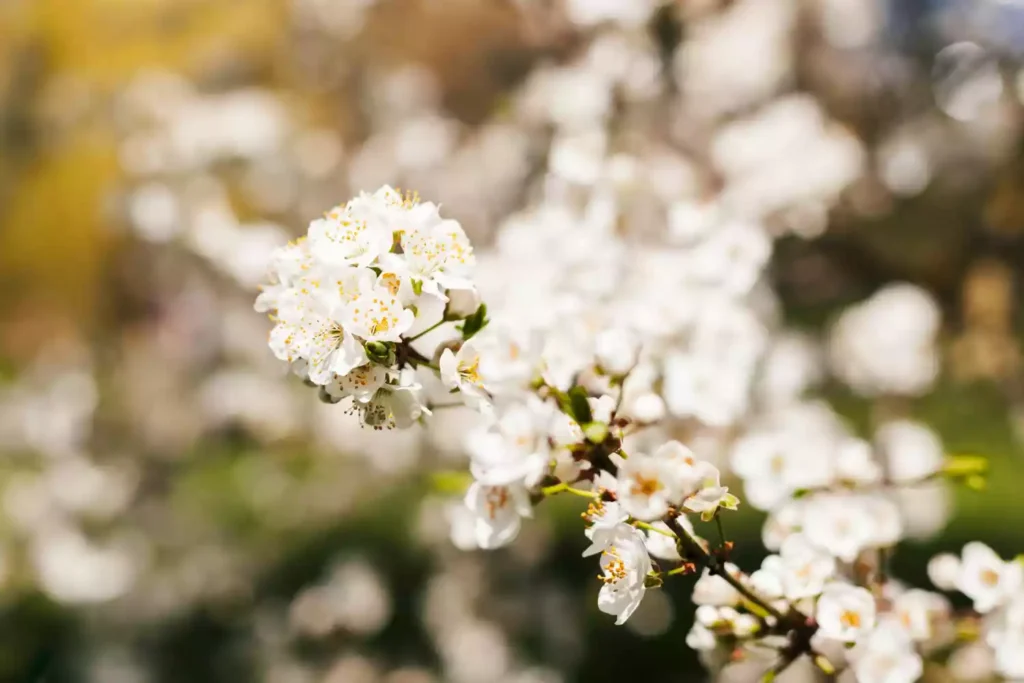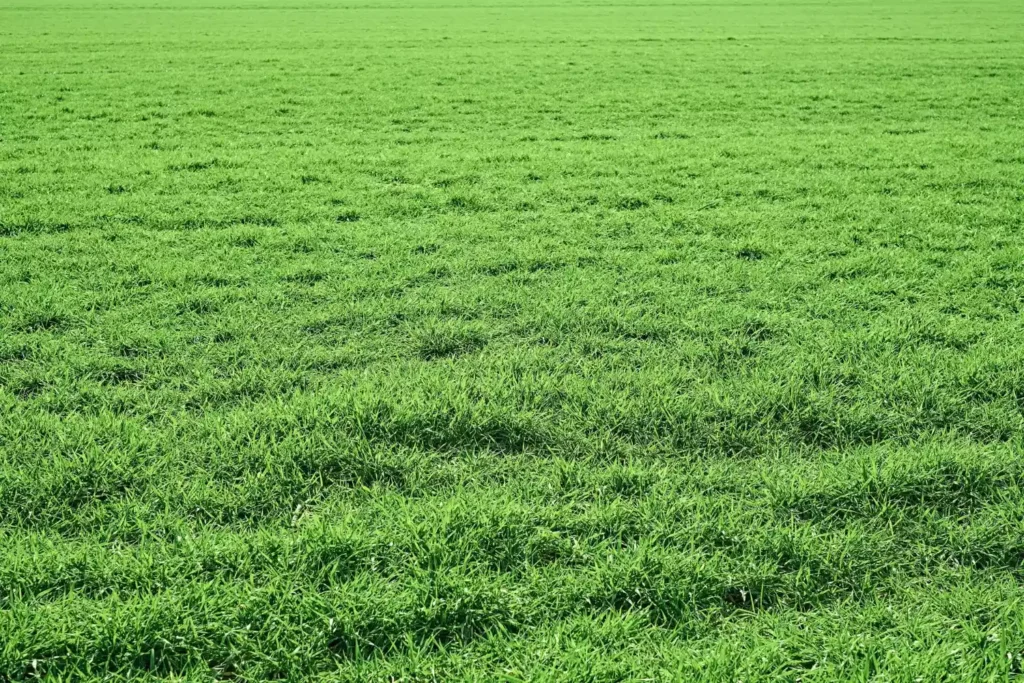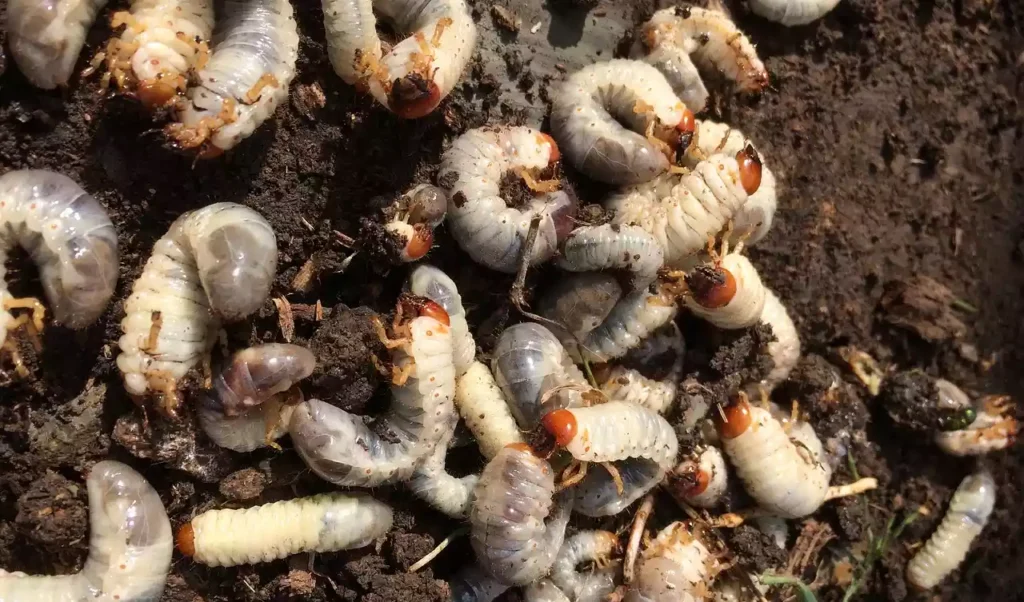Picture a lush, vibrant garden where vibrant green arugula thrives amidst a chorus of carefully chosen companions. When I consider the best plants to nurture alongside my arugula, I focus on those that can enhance its growth and deter pests effectively. Certain alliums, for instance, are known for repelling unwanted visitors, while bush beans enrich the soil with nitrogen. It’s critical to understand how these plants interact within their ecosystem for ideal results. What other combinations could elevate your arugula crop to new heights?
Key Takeaways
- Alliums like garlic and chives deter pests and enhance arugula’s flavor while optimizing garden space.
- Bush beans fix nitrogen in the soil and provide shade, creating an ideal microenvironment for arugula growth.
- Beets and Swiss chard offer essential shade and improve soil health, allowing arugula to thrive alongside.
- Chamomile attracts pollinators and serves as a pest deterrent, protecting arugula from harmful insects.
- Avoid planting arugula near nightshades and cruciferous vegetables, as they compete for nutrients and hinder growth.
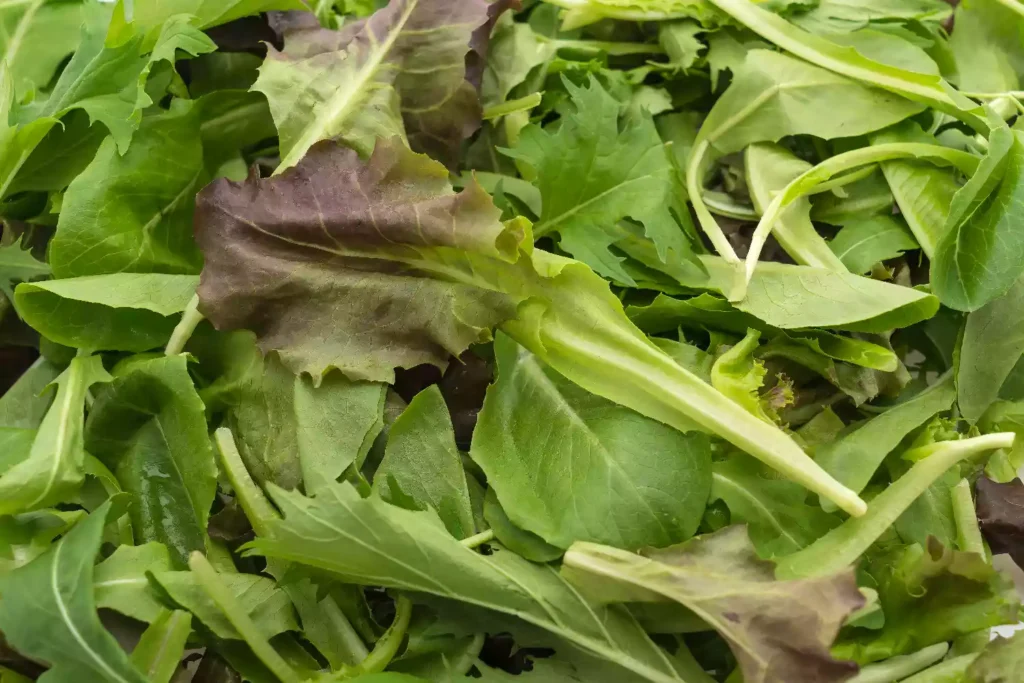
What is companion planting?
Companion planting is a strategic gardening technique where different crops are intentionally grown close together to enhance their growth and productivity. This practice enables us to foster a thriving garden ecosystem by leveraging the natural relationships between plants.
By carefully selecting companion plants for arugula, we can improve pest control and boost crop productivity. When I choose to plant arugula alongside certain species, I’m not just optimizing space; I’m also creating plant combinations that serve multiple purposes. Some plants possess strong scents that confuse pests, while others have antibacterial or antifungal properties, safeguarding the health of my crops.
Additionally, companion planting can attract beneficial insects like ladybirds and lacewings, which are essential for keeping aphid populations in check. Moreover, I find that certain combinations can effectively suppress weeds, minimizing competition for nutrients and sunlight.
- Beautiful - Large premium packet of Arugula (Eruca sativa) seeds.Arugula (also known as roquette or rocket) is a fast-growing, cool-season salad or sandwich green. Foodies adore it for its nutty, peppery flavor. Minimum of 1.5g (about 825 seeds) per packet.
- Productive - Arugula germinates in 5-10 days when soil temps are above 60°F. Plant 1/8” deep and space 6” apart in an area with full sun or partial shade. This variety will grow up to 1’ tall with a spread of 6-8”. Leaves will mature in 50-60 days, plant in USDA zones 2-11.
- Always Have Fresh Greens on Hand - Arugula is an essential ingredient for making brick oven pizza, tasty salads, and dressing up any vegetable or side dishes. Fresh arugula will make your food taste gourmet.
- Easy to Grow - Instructions included on each packet. Plus, we are available to answer all your questions. If these seeds don’t germinate, we will happily make it right for you.
- Safe and Sustainable - Our operation is fully solar powered, and Sow Right Seeds has taken the Safe Seed Pledge to sell only fresh Non-GMO heirloom seeds for you and your family.
Best Companion Plants For Arugula
When selecting companion plants for arugula, I’ve found that alliums, carrots, bush beans, and celery work particularly well.
Each of these plants offers unique benefits, enhancing growth and flavor while minimizing pests.
It’s also worth considering whether cucumbers can coexist with arugula in your garden design.
Alliums
Enhancing your garden’s ecosystem, alliums—like onions, garlic, and chives—serve as excellent companions for arugula. By incorporating these versatile plants into your garden rows, you not only boost the flavor of your dishes but also create a natural defense against common pests that threaten your arugula crop. The strong aromas emitted by alliums help deter pesky aphids and cabbage whiteflies, promoting healthier growth.
When planning your arrangement, consider sowing arugula in between your onions. This strategic placement maximizes space while allowing the alliums to perform their pest-repelling magic. Garlic can also play an essential role; its compounds work wonders in keeping harmful insects at bay.
Chives, with their delicate blossoms and distinct taste, offer both culinary benefits and pest resistance. Integrating these companion plants into your garden isn’t just beneficial for your arugula; it’s a smart step towards crafting a balanced ecosystem.
Embrace the synergy of alliums in your garden, and you’ll not only safeguard your greens but also enhance the overall biodiversity and health of your garden. With careful planning, you can create a thriving environment for your arugula to flourish.
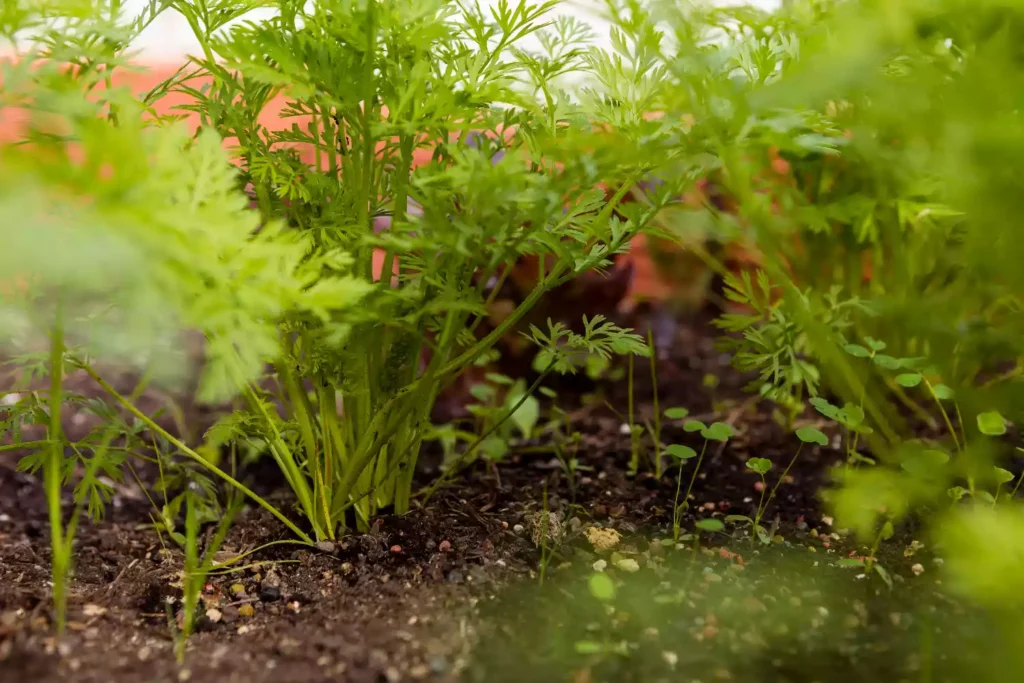
Carrots
Carrots can be a fantastic addition to your arugula garden, creating a mutually beneficial environment. As an excellent companion plant for arugula, carrots occupy a different growing zone, allowing both crops to thrive without competition.
The fronds of the carrot plant provide much-needed shade, which plays an essential role in preventing the arugula from bolting early. This can be particularly helpful during those hot summer months when temperatures rise, potentially harming your arugula crop.
By integrating carrots into your planting scheme, you’re effectively enhancing your garden ecosystem. The shade produced by carrot greens directly influences the growing conditions for arugula, allowing it to flourish over an extended harvest season.
This combination not only maximizes space but also contributes to a healthier garden as plants support each other’s growth and longevity.
Through companion planting, you’ll find that carrots and arugula create a harmonious interplay, fostering an environment where both can reach their full potential.
Bush Beans
Bush beans are an excellent choice for companion planting with arugula due to their ability to fix nitrogen in the soil, enriching the nutrient content for both crops. As I’ve discovered, nitrogen-rich soil is essential for helping arugula thrive, making bush beans one of the best companion plants for arugula.
Furthermore, bush beans provide shade for the arugula, protecting these delicate greens from harsh sun rays. This shade helps prevent soil moisture evaporation, ensuring that the arugula remains well-hydrated and safe during hot weather.
I’ve noticed that when planted together, the microenvironment created by bush beans allows arugula to flourish, even under less-than-ideal conditions.
Incorporating bush beans into my garden has greatly boosted my arugula crop. The partnership between these two plants fosters a symbiotic relationship; the beans enrich the soil while the arugula benefits from the shade and moisture retention.
If you’re looking to serve others fresh, vibrant arugula, consider adding bush beans to your planting strategy. You’ll find that this combination not only yields healthier plants but also enhances your overall gardening experience.
Celery
When it comes to cultivating arugula alongside celery, I’ve found that both plants thrive under similar growing conditions, making them a perfect match in the garden.
By incorporating celery as a companion plant for arugula, you can create a thriving garden ecosystem that maximizes your garden space effectively.
Celery and arugula enjoy cool weather, well-draining soil, and similar watering needs, which simplifies the care for both crops.
When I plant arugula seeds alongside celery, I notice they tend to do well together, exhibiting robust growth and immunity to pests.
The benefits of companion planting, specifically with these two, lie in their ability to foster each other’s growth while enhancing flavor profiles.
Moreover, celery acts as a natural deterrent for certain pests that can adversely affect arugula.
This symbiotic relationship between them means you’ll have less to worry about and more time to enjoy the fruits of your labor.
If you’re seeking excellent companions for arugula, don’t hesitate to plant celery.
Together, they can transform your garden into a productive and harmonious environment, ensuring a bounty for your meal tables.
Can cucumbers and arugula be planted together?
Planting cucumbers alongside arugula can yield surprising benefits for your garden. While they might seem like an odd pairing, cucumbers and arugula make a great companion plant duo.
Cucumbers provide essential shade for arugula, especially during the hot summer months when arugula can wilt and bolt quickly. The large cucumber leaves effectively shield the delicate arugula leaves from scorching sun, allowing them to thrive.
Here are some advantages of planting cucumbers and arugula together:
- Shade Protection: Cucumbers provide shade for arugula, mitigating wilting.
- Beneficial Insects: Arugula attracts beneficial insects like ladybugs, which prey on cucumber pests.
- Height Variety: The differing heights of the plants optimize space and light absorption.
- Enhanced Growth: Companion planting allows both crops to flourish, creating a thriving garden ecosystem.
Chamomile
Alongside cucumbers, chamomile stands out as an excellent companion for arugula. This aromatic plant not only serves as a delightful addition to the garden but also plays a critical role in enhancing the growth of your arugula. One of the key benefits of planting chamomile is its ability to attract pollinating insects, which are essential for the overall health of your garden. These beneficial insects contribute to the pollination process, ultimately leading to better yields.
Moreover, the strong fragrance of chamomile can help conceal arugula from annoying garden pests. By creating a barrier of scent, chamomile acts as a shield, protecting your arugula plants from potential threats. This natural pest deterrent means you can grow your arugula with confidence, knowing they’re less vulnerable to infestations.
Incorporating chamomile as a companion plant allows you to foster a diverse ecosystem within your garden. Its presence not only helps in controlling pests but also encourages a harmonious balance among various species.
Beets
Beets can be an invaluable addition to your arugula garden. As companion plants for arugula, beets offer several advantages that enhance both plants’ growth and productivity.
Since their roots grow underground, beets won’t compete with arugula for nutrients, allowing both to thrive. In addition, the leafy tops of the beets provide essential shade for arugula, helping to protect it from the scorching sun and improving your arugula harvest during hot weather.
Here are some benefits of growing beets alongside arugula:
- No Root Competition: Beets’ roots occupy different soil levels, minimizing competition.
- Shade for Arugula: The foliage shields arugula from excessive heat, promoting better growth.
- Soil Moisture Retention: Beets help to retain soil moisture, which is vital for arugula’s health.
- Winning Team: The combined growth of beets and arugula creates a more balanced, productive garden.
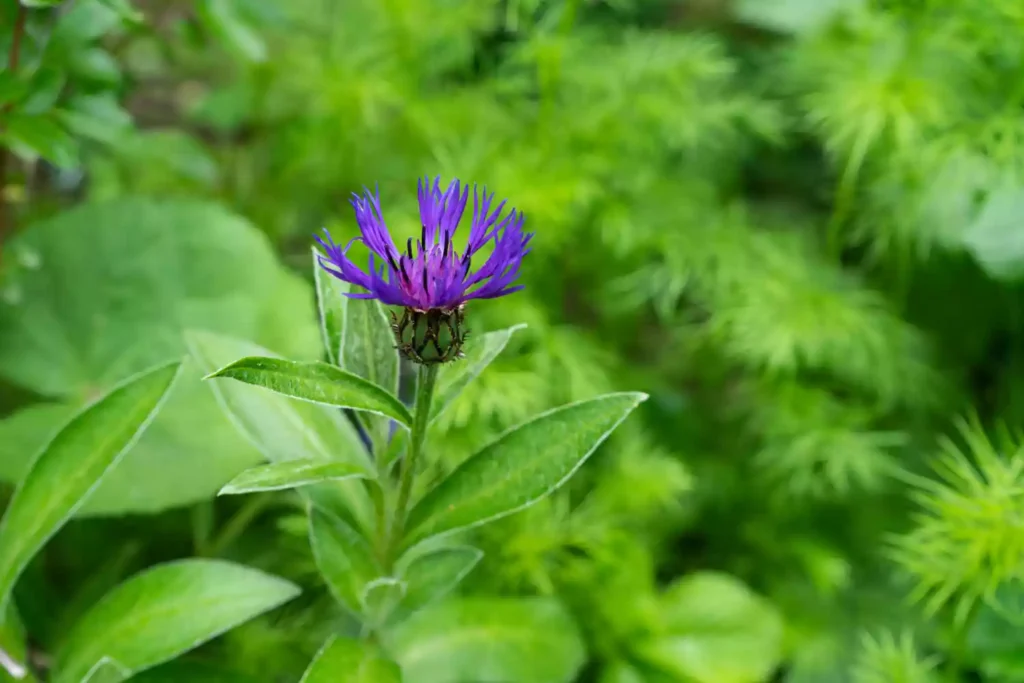
Borage
Incorporating borage into your arugula garden can markedly enhance the overall growth environment. Borage serves as an excellent companion plant for arugula by providing essential shade during hot summer months, helping to maintain ideal growing conditions.
Furthermore, it acts as a natural flea beetle deterrent, which is particularly beneficial in keeping your arugula healthy and free from pests.
The striking blue flowers of borage aren’t just aesthetically pleasing; they attract beneficial insects and pollinators, fostering a thriving ecosystem in your garden. These pollinators play a vital role in enhancing overall garden productivity, as they help facilitate the reproduction of various plants.
Additionally, borage helps to repel unwanted visitors, including curious wildlife like deer and cabbage moth caterpillars.
Swiss Chard
In my garden, Swiss chard stands out as a superb companion for arugula. The two plants thrive together, benefiting from a shared preference for well-moistened soil. When I plant Swiss chard alongside arugula, I enjoy the flexibility of harvesting the young Swiss chard while collecting spicy arugula greens simultaneously.
Alternatively, I let the chard grow larger, as its broad leaves provide essential shade for the arugula, helping to prevent bolting in warmer months.
This companion planting strategy promotes an efficient use of garden space, as both plants can be grown closely together without competing for resources. The combination enhances soil health too, with Swiss chard’s extensive root system breaking up compacted soil, allowing nutrients to be more accessible for arugula.
Additionally, the two plants’ growth cycles complement one another; arugula is typically quick to mature, while Swiss chard provides a continuous harvest well into the season.
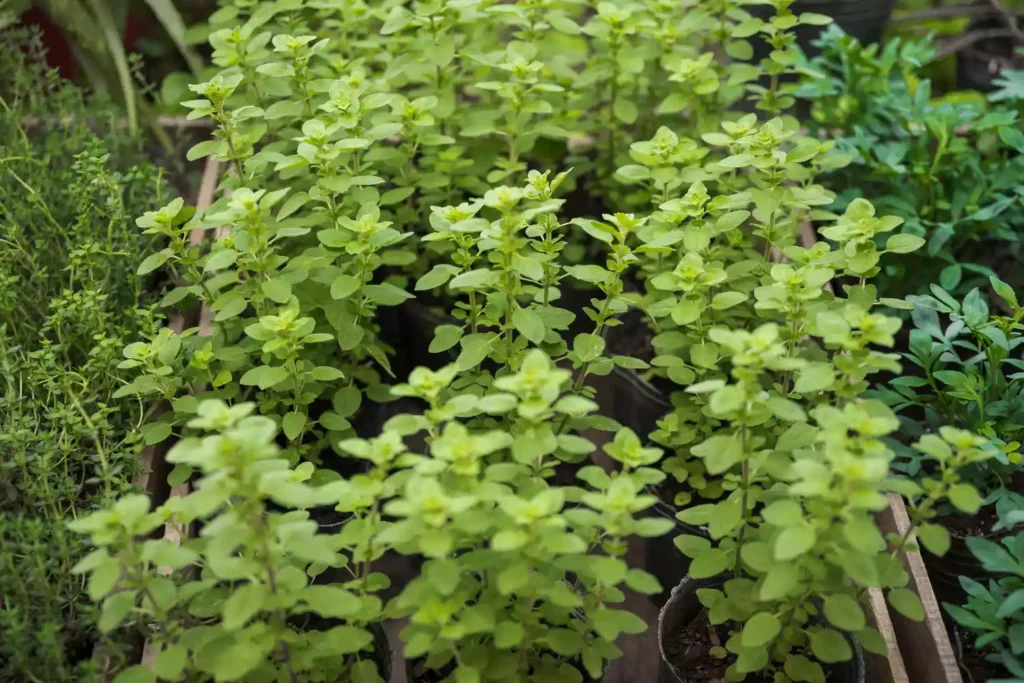
Herbs
Herbs are essential allies in creating a thriving environment for arugula, offering both flavor enhancements and pest protection.
When I cultivate arugula, I always consider incorporating specific herbs as companion plants. Not only do these herbs enhance the flavor of my dishes, but they also serve as natural pest repellents.
Here’s a selection of some fantastic herbal companions you might try:
- Basil: Strongly aromatic, basil deters pests while adding a delightful taste.
- Thyme: This versatile herb repels harmful insects and helps enrich the soil.
- Sage: Known for its distinctive flavor, sage also keeps pesky bugs at bay.
- Dill: Dill attracts beneficial insects, like ladybugs, that eat harmful pests.
Spinach
I often find that spinach is an excellent companion for arugula, as they share very similar growing requirements.
When I’m growing arugula, I appreciate how spinach thrives in the same cool soil and moisture-rich environment.
Both of these leafy greens not only flourish together but can also help maximize space in the garden.
Here are a few reasons why I recommend this pairing:
- Similar Growing Needs: Both spinach and arugula prefer cooler temperatures, making them ideal for spring and fall gardens.
- Enhanced Moisture Retention: Their foliage helps retain moisture in the soil, benefiting both plants.
- Pest Deterrence: The combined scent of these greens can deter pests like aphids, helping both plants thrive.
- Nutrient Efficient: Growing these two as companions can optimize nutrient use in the soil, ensuring healthy plants.
Lettuce
After discussing spinach, another excellent companion for arugula is lettuce. When planting and growing these two greens together, I’ve found that lettuce not only provides shade for arugula but also complements its flavors beautifully in salads. Both are cool-weather crops, making them ideal partners in your garden.
Lettuce varieties come in a plethora of colors and textures, which adds visual appeal to my garden. From crisp romaine to tender butterhead, the vibrant hues enhance the overall aesthetic while offering different taste experiences.
This combination of arugula and lettuce allows me to create diverse and flavorful salads that delight anyone I serve.
In terms of care, lettuce grows quickly, allowing for staggered harvests that won’t compete directly with my arugula plant. This synergy maximizes the use of space in my garden while improving overall yield.
Additionally, lettuce’s leafy canopy protects the arugula from harsh sun, creating a favorable microclimate.
Radish
Growing alongside arugula, radishes prove to be a fantastic companion plant. These fast-growing vegetables thrive in similar conditions, making them ideal garden companions.
When I plant radishes with arugula, I notice several benefits that enhance the overall health of both crops.
- Soil aeration: The radish roots help break up compact soil.
- Quick harvest: You can enjoy radishes in as little as three weeks, allowing you to make room for later crops.
- Pest deterrent: The strong flavor of radish can help ward off pests that might target arugula.
- Nutrient sharing: Both plants benefit from the same nutrients, promoting healthy growth.
Marigold
Marigolds are among the most beneficial companion plants for arugula, bringing both beauty and functionality to the garden. Their bright blooms not only add a vibrant touch to my space, but they also work hard to repel pests that often plague my arugula crops. By planting marigolds alongside arugula, I can greatly reduce the risk of nematodes and other unwanted insects that threaten the health of my arugula leaves. Marigolds are excellent companions because they attract beneficial insects, like ladybugs and lacewings, which help control pest populations naturally. This strategic approach to companion planting allows me to cultivate arugula in a healthier, more balanced ecosystem. Additionally, marigold roots exude compounds that deter harmful pests from taking up residence in the soil, creating a protective barrier around my arugula. Ants, for example, contribute to natural pest control by eating pest eggs and disturbing foraging. When I choose to integrate marigolds into my garden, I reap multiple rewards: stunning visual appeal, improved pest management, and enhanced overall plant health.
Nasturium
When I think about effective companion plants for arugula, nasturtiums immediately come to mind.
These vibrant plants not only add a splash of color to my garden, but they also serve an essential role in companion planting. With their peppery punch in both flowers and leaves, nasturtiums become trap crops for aphids. By growing them strategically a few feet away from my arugula, I create a natural barrier to keep those pesky pests at bay.
Here are some reasons why I love incorporating nasturtiums:
- Trap Crops: Attract aphids away from arugula.
- Sacrificial Crop: They willingly take the hit for the team.
- Beneficial Insects: They draw in good bugs that help control pests.
- Edible Flowers: Their blooms add flavor and beauty to dishes.

Sunflower
Nasturtiums not only beautify my garden but also play an important role in pest management. Similarly, sunflowers serve as an excellent companion plant for arugula. These stunning flowers not only elevate the visual appeal of any garden, but they also attract beneficial insects.
By planting sunflowers alongside arugula, I invite various pollinators, particularly bees, which are essential for boosting crop yields. The presence of sunflowers also brings ladybugs to my garden—these little helpers feast on unwanted pests like aphids, effectively shielding my arugula from damage without the use of harmful pesticides.
The tall stalks of sunflowers provide a vertical space in my garden, allowing arugula to thrive in the shade. This is particularly beneficial during the hotter months when arugula can become bitter if it receives too much direct sunlight.
Furthermore, as the sunflowers attract all these beneficial insects, they create a balanced ecosystem, ensuring that my arugula remains healthy and productive. By incorporating sunflowers into my garden layout, I’m not only enhancing beauty but also fostering a thriving, resilient environment for my arugula and its companion plants.
What plants to avoid with arugula?
When growing arugula, it’s important to steer clear of certain plants that can hinder its development.
Nightshade plants, cruciferous vegetables, strawberries, and potatoes can compete for nutrients and space, negatively impacting arugula’s growth.
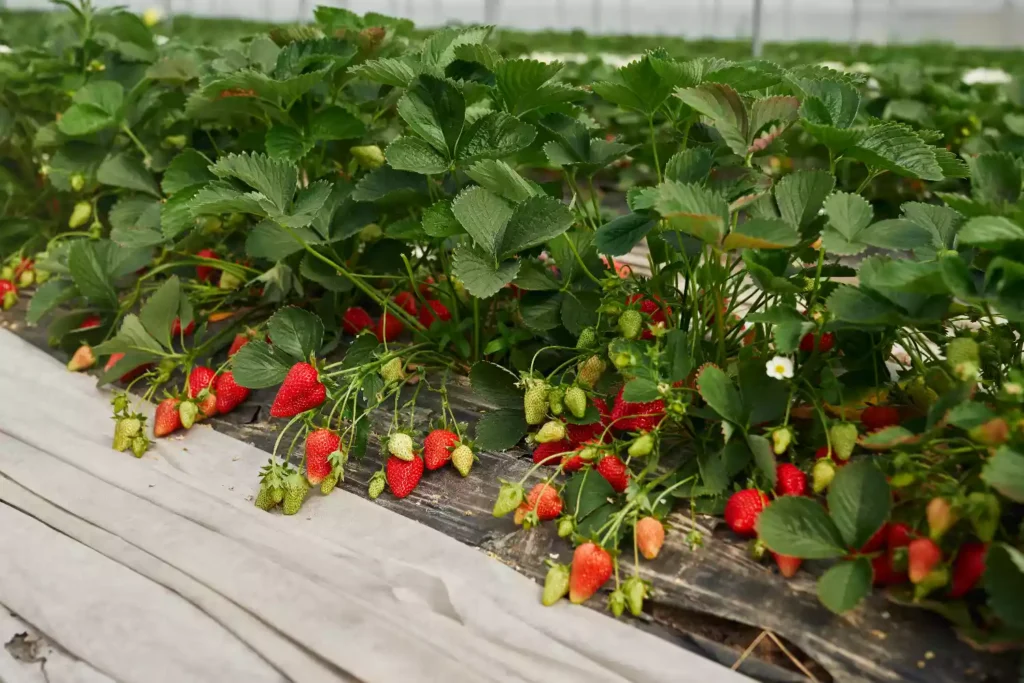
Strawberries
Considering the growth habits of strawberries, I highly advise against planting them alongside arugula.
While strawberries can serve as a fine ground cover, their spreading growth often overwhelms arugula. This can lead to a competitive environment, greatly reducing the chances for arugula to thrive.
Here are a few reasons why strawberries don’t make good companion plants for arugula:
- Spreading Growth: Strawberries spread quickly and can outcompete arugula for space and nutrients.
- Shading: If arugula does survive, it may not receive enough sunlight, particularly in hot weather, resulting in stunted growth.
- Bolting: Without adequate light, arugula is likely to bolt, leading to a bitter taste and reduced harvest.
- Garden Harmony: Companion planting aims to create beneficial relationships in your garden, and strawberries disrupt this balance with their aggressive nature.
Nightshade Plants
Often, gardeners look to maximize their harvest by evaluating which plants thrive together. However, nightshade plants like tomatoes, eggplants, and peppers present unique challenges when it comes to growing arugula.
These nightshades thrive in more acidic soil conditions, while arugula prefers a more neutral pH. Trying to maintain that delicate balance can lead to compromise, ultimately resulting in both plants suffering.
Here are a few nightshade plants to avoid pairing with your arugula:
- Tomatoes
- Eggplants
- Peppers
- Potatoes
With different pH requirements, the likelihood of achieving the ideal growing conditions for both types becomes challenging. The acidic soil favored by nightshade plants can stunt arugula’s growth and flavor, leaving you with disappointing yields.
It’s critical to evaluate these compatibility issues when engaging in companion planting. I recommend prioritizing plants that not only complement arugula’s growth but also enhance overall garden health.
Cruciferous Vegetables
While evaluating companion plants, it’s important to contemplate how certain species can negatively impact arugula’s growth. When it comes to arugula, I strongly recommend avoiding planting cruciferous vegetables like cabbage and broccoli nearby.
These plants can considerably compete with your arugula for essential nutrients and space in the garden. Cabbage and broccoli, while nutritious in their own right, require similar resources as arugula.
This competition can lead to stunted growth, limiting the flavor and yield of your arugula. When I plant arugula, I focus on ensuring that it has adequate access to the rich nutrients it needs to thrive.
Potatoes
The competition for resources between potatoes and arugula creates an unfavorable environment for the latter. When you cultivate these two in proximity, the potatoes’ growing habit can overshadow the delicate arugula, stressing it and limiting its growth potential. This lack of sunlight and space may hinder your arugula’s ability to thrive.
Moreover, potatoes can attract pests that pose a significant threat to your garden. Aphids, and certain beetles that favor potatoes, could easily migrate to your arugula plants, damaging them and compromising their vitality. It’s crucial to create an environment where your arugula can flourish without the added burden of potential pests.
Instead of potatoes, look for companion plants that can shield your arugula, promoting a healthy garden ecosystem. Opt for herbs like basil or flowers such as marigolds, which deter pests and enhance growth conditions.
Does arugula like full sun or shade?
Growing arugula successfully hinges on understanding its light requirements. I’ve found that arugula prefers full sun, making it crucial to provide at least six hours of direct sunlight each day. This exposure helps arugula thrive and allows its fast-growing nature to shine.
If you want to guarantee that your arugula grows healthy and robust, always choose a sunny spot in your garden.
Here are a few tips for creating the ideal environment for arugula:
- Plant arugula in well-drained soil: This helps prevent root rot and guarantees healthy growth.
- Incorporate compost or fertilizer: Adding nutrients can greatly enhance growth and flavor.
- Monitor the sunlight: Too much shade can stunt growth and lead to a less flavorful harvest.
- Water when the soil gets dry: Maintaining consistent moisture is crucial, especially in sunny environments.
When you start companion planting with arugula, choose companion plants like radishes or beets, which share similar light and soil needs, guaranteeing a harmonious garden.
How often should I water arugula?
Maintaining consistent moisture is crucial for successful arugula growth, as these plants have shallow roots that struggle to access deeper water sources. I recommend watering arugula daily or every other day, just enough to keep the soil moist but not soaking. If you allow the soil to dry out too much, it can hinder the plant’s ability to absorb nutrients and thrive.
The key is to monitor your soil’s moisture levels closely. Simply touch the top inch; if it feels dry, it’s time to water. Arugula loves moisture, and keeping it evenly hydrated guarantees it grows vibrantly.
Be cautious of overwatering, as soggy soil can lead to root rot and affect your companion planting efforts.
Consider incorporating mulch around your arugula plants to help retain moisture in the soil and regulate temperature. It’s a simple yet effective way to make sure your plants have consistent access to water.



